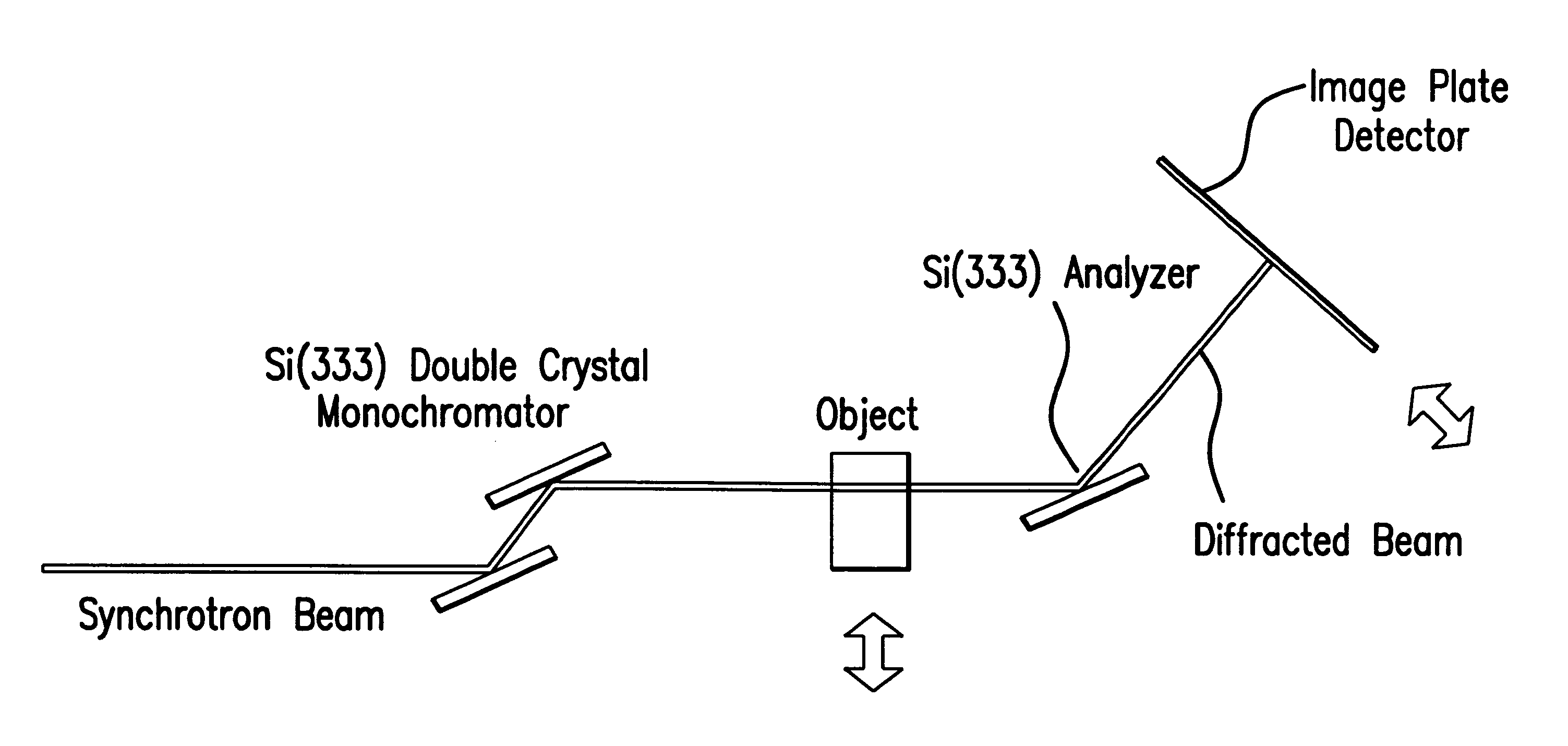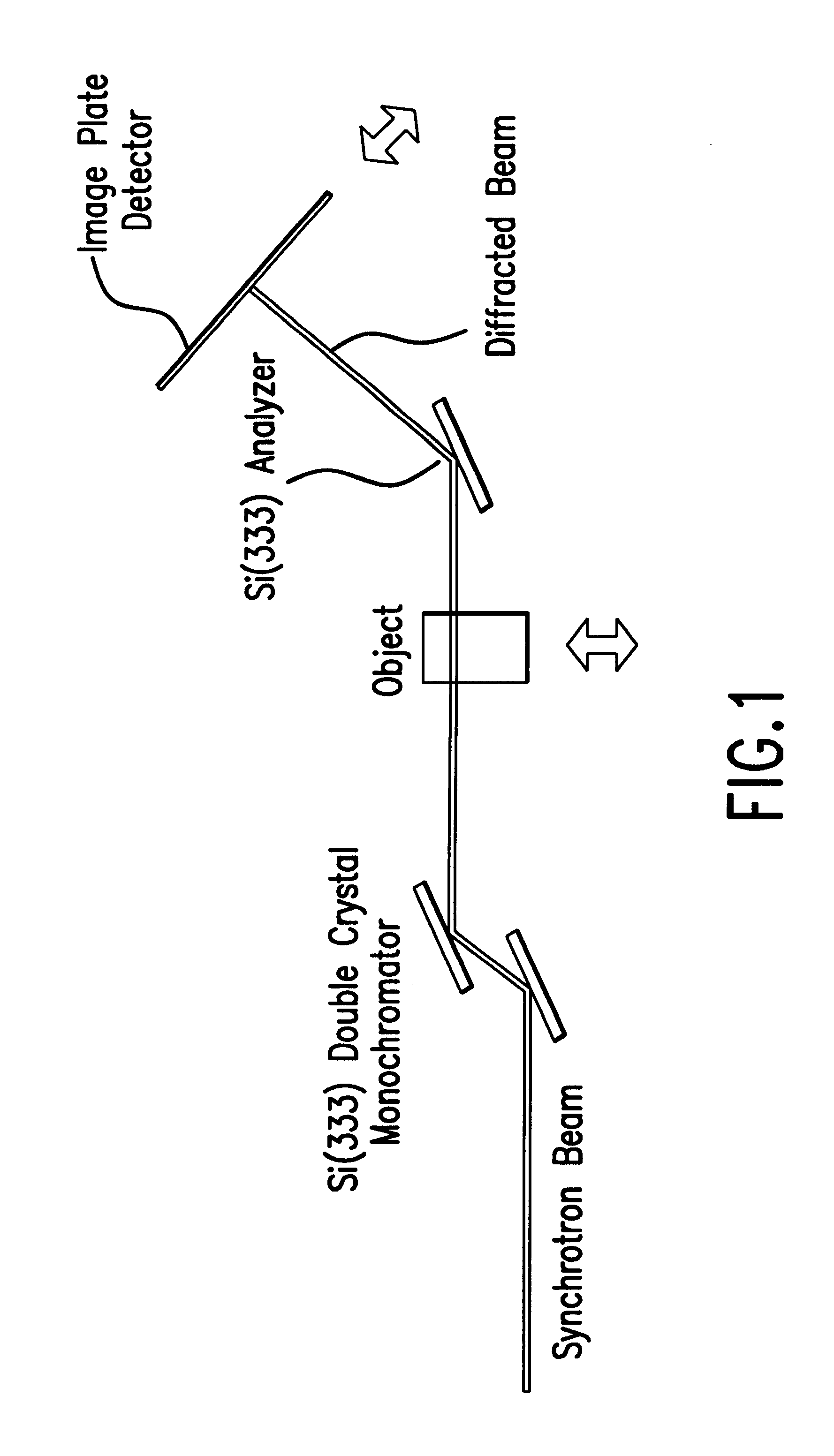Diffraction enhanced x-ray imaging of articular cartilage
a technology of articular cartilage and x-ray imaging, which is applied in the field of contrast mechanism, can solve the problems of insufficient pain and early warning signs, failure to achieve successful conservative treatments that could lead to tissue regeneration, and deformation of the entire join
- Summary
- Abstract
- Description
- Claims
- Application Information
AI Technical Summary
Problems solved by technology
Method used
Image
Examples
example
Experiments using the method and the system of this invention were performed at the National Synchrotron Light Source 15A Imaging PRT Beamline, at Brookhaven National Laboratory, Upton, N.Y. Preliminary results have rendered an interpretation of refraction and a qualitative description of extinction. One experimental setup is shown in FIG. 1. A white synchrotron beam was made nearly monochromatic by a silicon double-crystal monochromator. One usable energy range of this system, as used, was 15 keV -40 keV. For the measurements described here the beam energy was 18 keV with a bandwidth of 1.5 eV, but could also be 16 keV to 100 keV with a bandwidth of 1.5 eV and 2.6 eV, respectively. An in-hutch monochromator was used to monochromate the beam to provide the imaging beam. The monochromator had silicon (3,3,3)-lattice planes. The type of lattice planes can be selected to determine the refraction and scatter rejection sensitivity. All of the crystals in the system were in the parallel g...
PUM
| Property | Measurement | Unit |
|---|---|---|
| energy level | aaaaa | aaaaa |
| energy level | aaaaa | aaaaa |
| photon energy | aaaaa | aaaaa |
Abstract
Description
Claims
Application Information
 Login to View More
Login to View More - R&D
- Intellectual Property
- Life Sciences
- Materials
- Tech Scout
- Unparalleled Data Quality
- Higher Quality Content
- 60% Fewer Hallucinations
Browse by: Latest US Patents, China's latest patents, Technical Efficacy Thesaurus, Application Domain, Technology Topic, Popular Technical Reports.
© 2025 PatSnap. All rights reserved.Legal|Privacy policy|Modern Slavery Act Transparency Statement|Sitemap|About US| Contact US: help@patsnap.com



